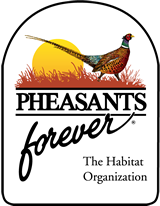 Division research conducted in the early 1980’s indicated that severe winter weather was the limiting factor for pheasants in eastern Colorado, particularly when winter snow storms were accompanied by strong winds and drifting snow. Pheasants inhabiting poor, thin cover were killed in large numbers, either from hypothermia or suffocation during severe winter blizzards, and those that did survive the initial storm were at peril from a host of predators, because the storm normally covered up the available security cover.
Division research conducted in the early 1980’s indicated that severe winter weather was the limiting factor for pheasants in eastern Colorado, particularly when winter snow storms were accompanied by strong winds and drifting snow. Pheasants inhabiting poor, thin cover were killed in large numbers, either from hypothermia or suffocation during severe winter blizzards, and those that did survive the initial storm were at peril from a host of predators, because the storm normally covered up the available security cover.
 Shrub thickets with windbreaks were developed to provide a tall, dense cover that would remain standing through the most severe storm, and give pheasants a place to escape predators and the elements. Shrubs that sucker from the roots, like native plums, chokecherries, or buffaloberry, are used to create this dense thicket, and are oriented to the lee side of the 3-row juniper windbreak that protects the thicket from blowing and drifting snow. Shrub thickets and windbreaks are critical to pheasants during and immediately after winter storms, but are also used during other times of the year, for loafing, escape, and brooding cover.
Shrub thickets with windbreaks were developed to provide a tall, dense cover that would remain standing through the most severe storm, and give pheasants a place to escape predators and the elements. Shrubs that sucker from the roots, like native plums, chokecherries, or buffaloberry, are used to create this dense thicket, and are oriented to the lee side of the 3-row juniper windbreak that protects the thicket from blowing and drifting snow. Shrub thickets and windbreaks are critical to pheasants during and immediately after winter storms, but are also used during other times of the year, for loafing, escape, and brooding cover.








